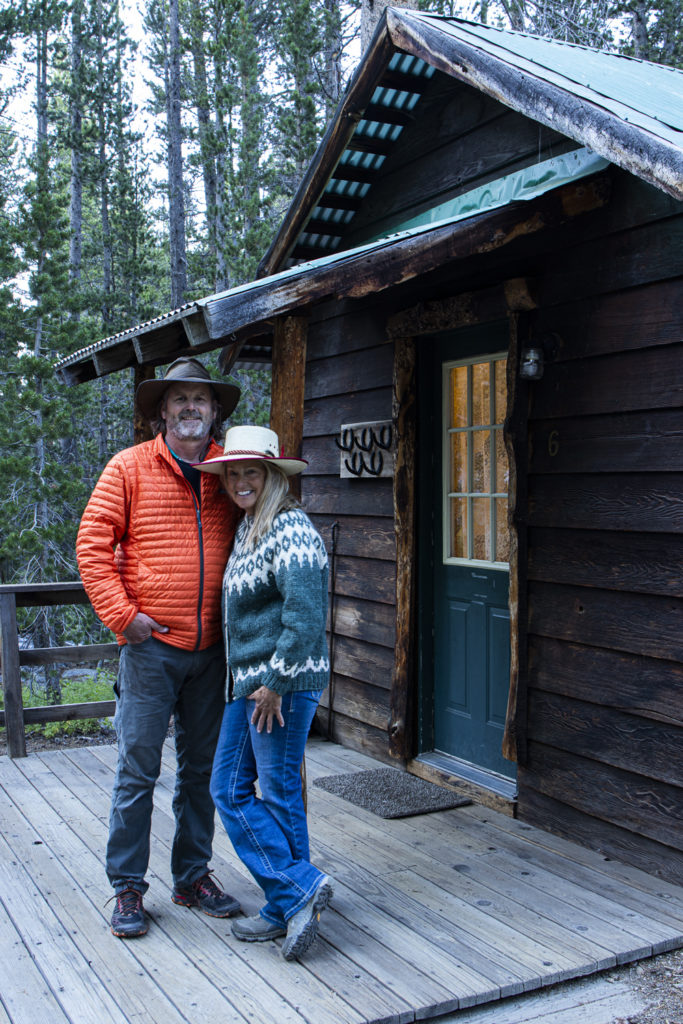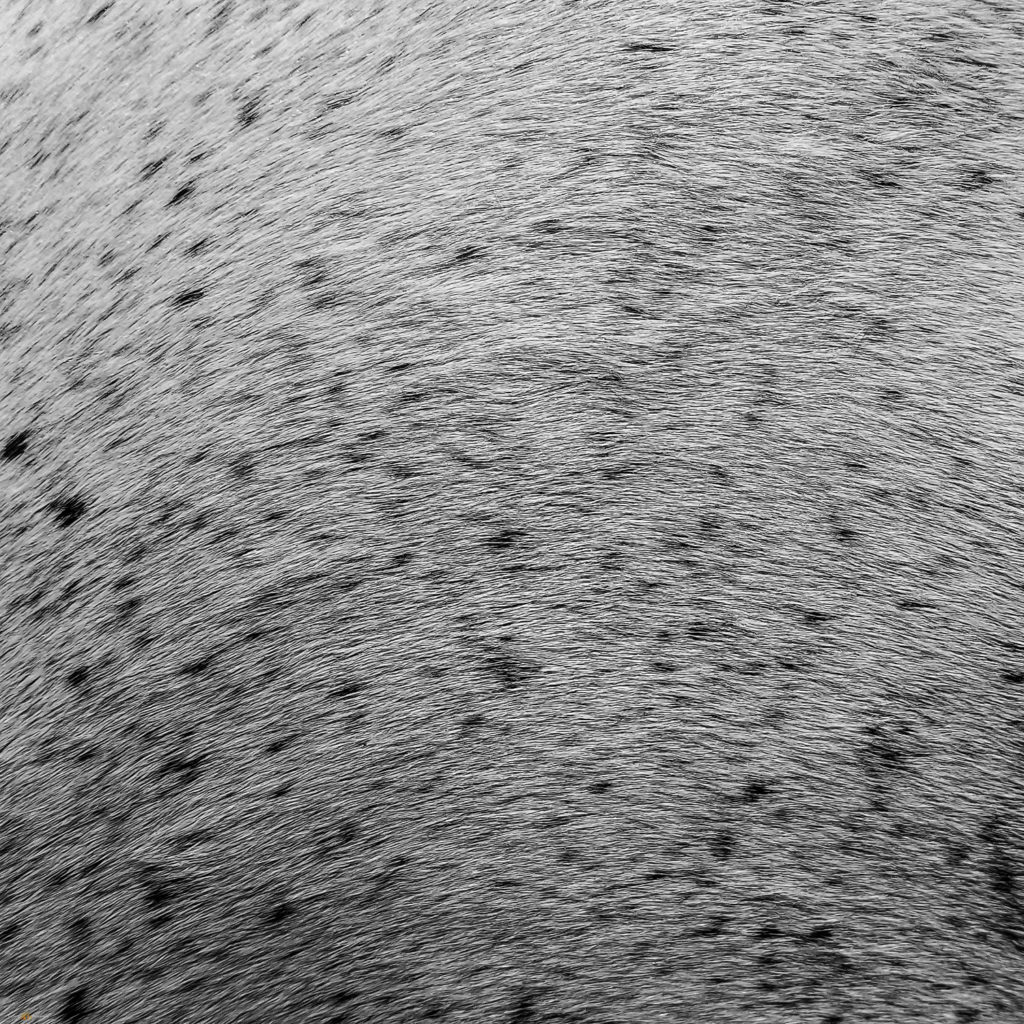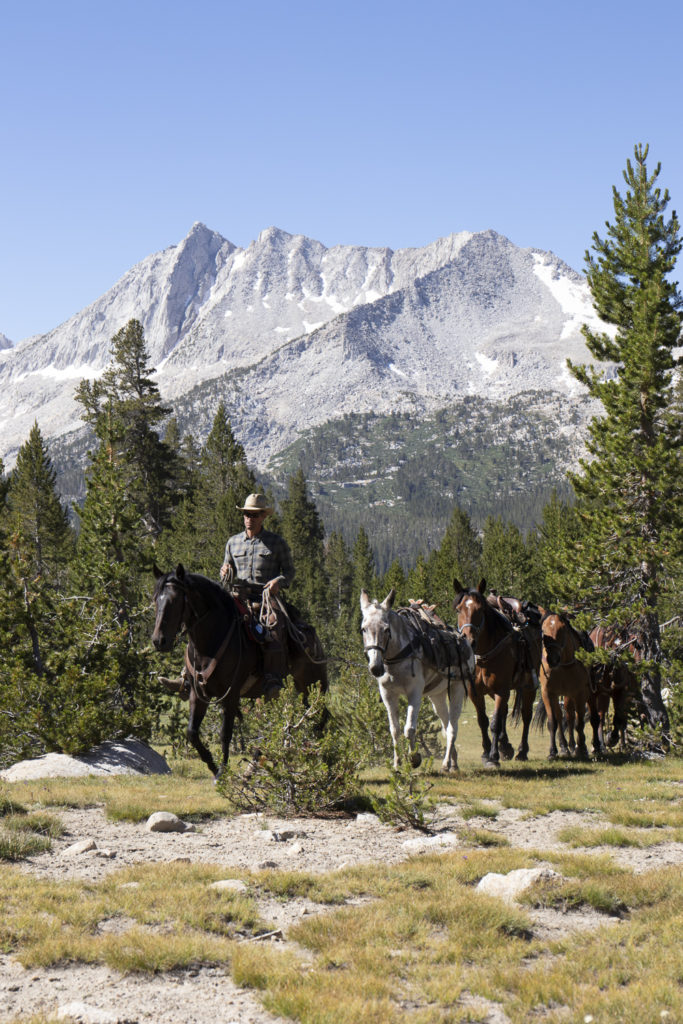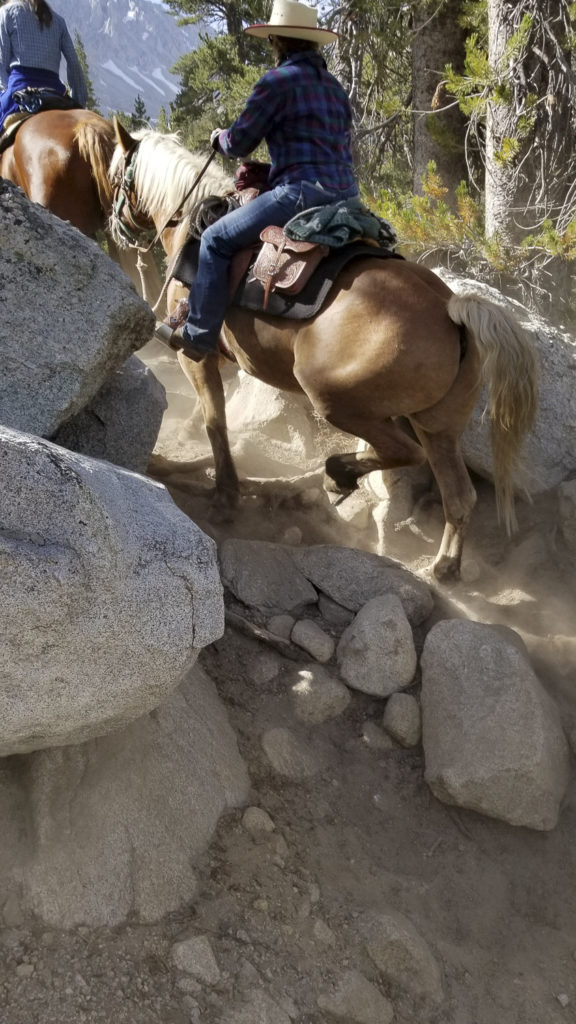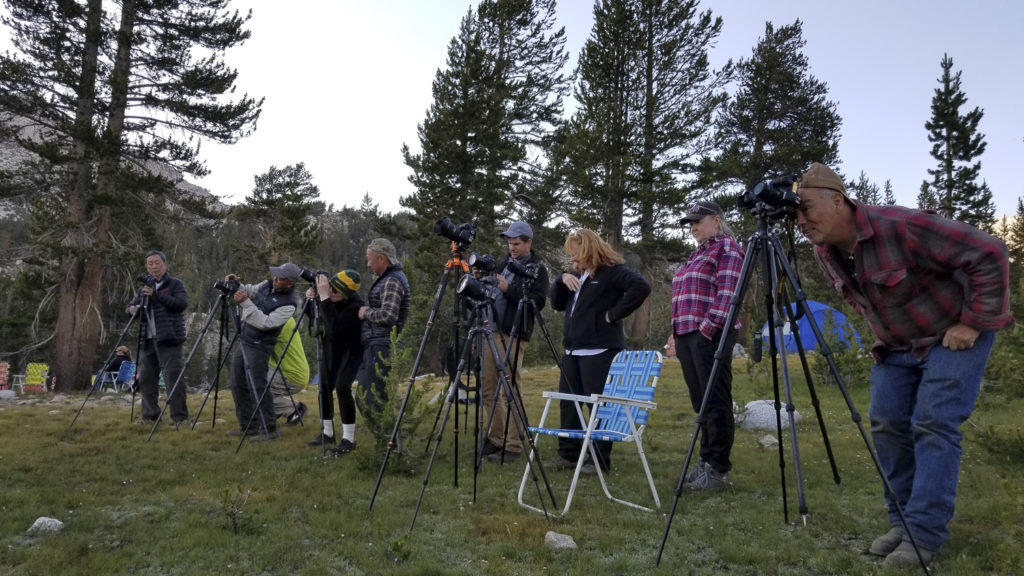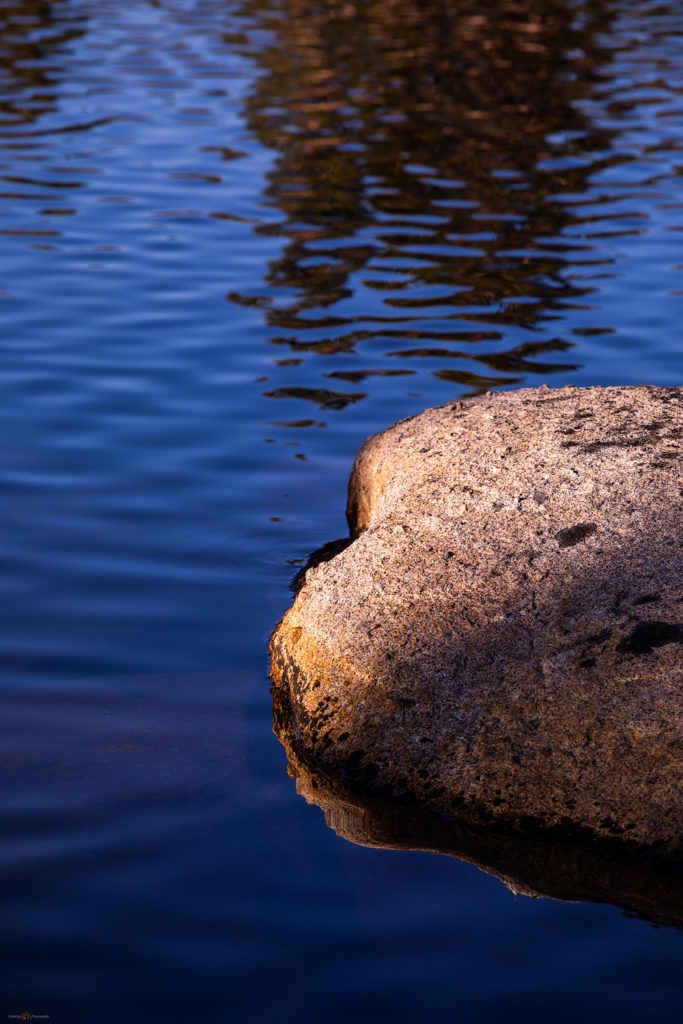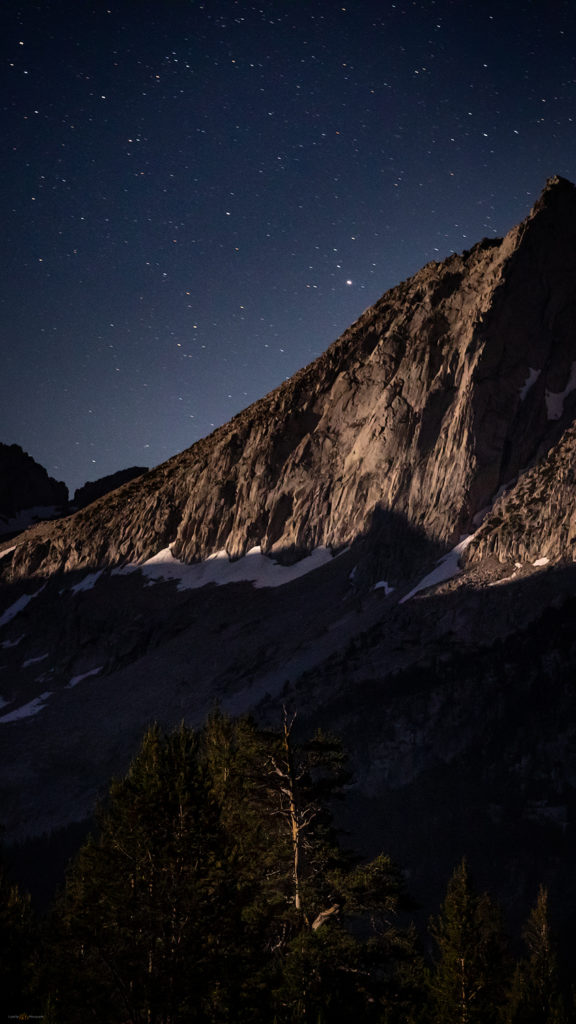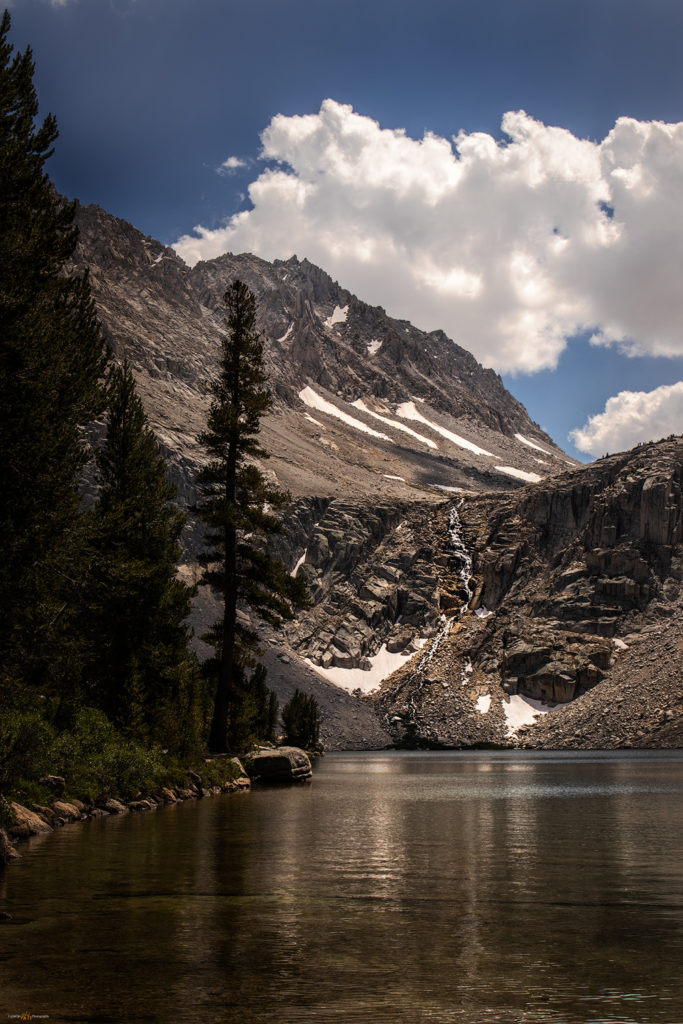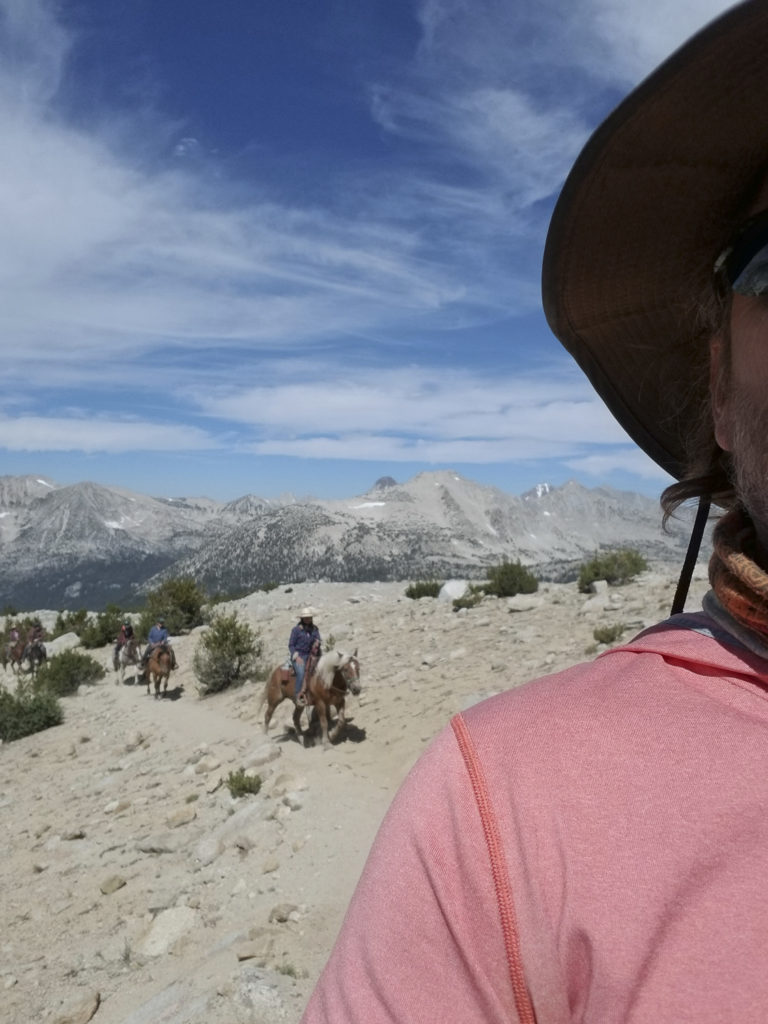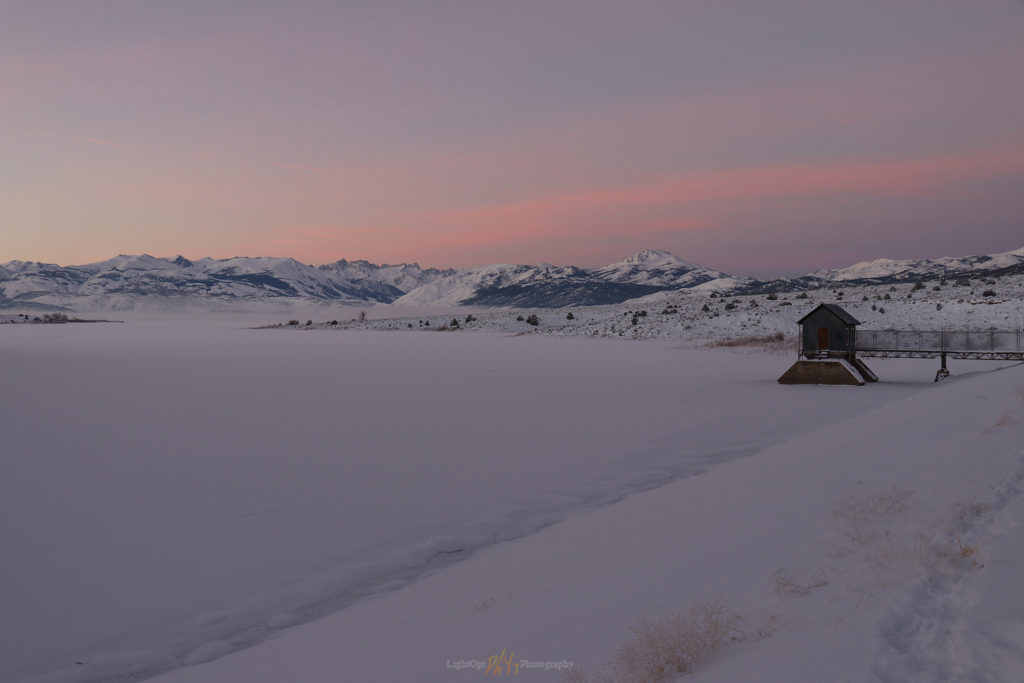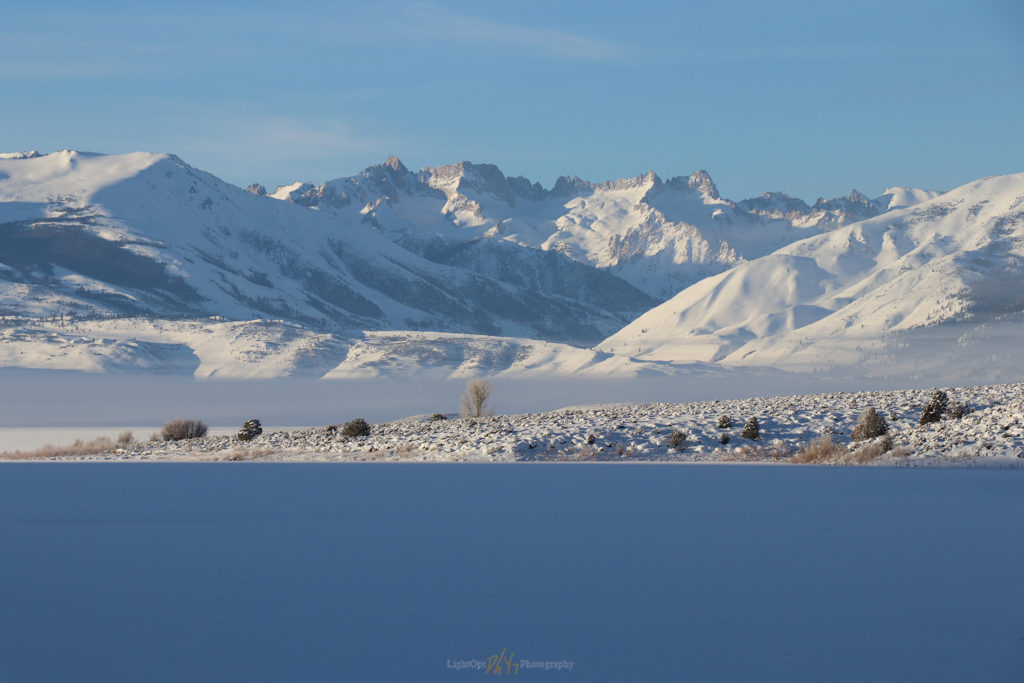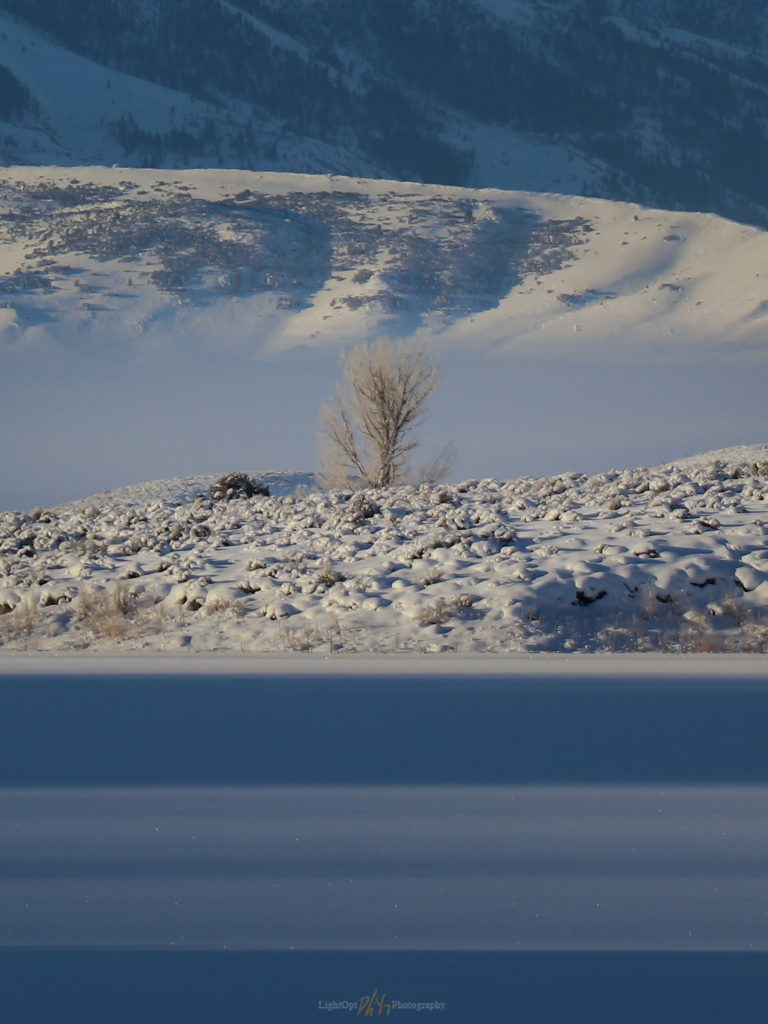Desna, my wife and partner, is into horses. I am comfortable around horses and like them, but I am mostly the local ranch-hand in charge of construction duties that come with having a couple horses here at StoneHeart. Ok, I truly enjoy sitting on the fence at sunset, sharing a beer with the one horse that enjoys a few sips. I can stay upright in a saddle and, although lacking the appropriate horseman etiquette and skill, I can get them to go almost where I want them to go – as if anyone really can, they pretty much do what they want.
So, it was quite the surprise when, in January of last year, Des brought up the idea of doing a pack trip in the Sierra. While researching the possibilities of attending some cow-camps with Jahtz, the beer-sipping horse, she had gotten a friend’s recommendation to check out the offerings of the Rock Creek Pack Station. Now, I am all in favor of Des heading off to cow-camp, but the horse is much better company on those outings than I would ever be. And yet, something else caught Desna’s attention. The pack station has teamed up with photographer Ken Lee, offering a photographic workshop and tour, via horseback and backcountry camps set by a pack team in the high reaches of the Pioneer Basin of the Sierra Nevada.
Des stewed on it for a few days, thinking she would have to coax me into even considering spending five days on horseback. She thought it would be the best of both worlds, horses and photography – activities we often do independently – in the mountain environment we love. When she proposed the trip, I took a quick look at The Art of Seeing, the portal to Ken’s photographic creativity, world travel, and instruction. I was immediately all in. She was as surprised at my quick acceptance as I was to her original proposal. It is our 30th summer together, so in August 2019, we would have the perfect celebration.

Eight Months Later: August 2019 –
We spent the night at a rustic little cabin at Rock Creek Resort. Rock Creek is only a couple hours from StoneHeart but we splurged a bit on the creek-side cabin, knowing we would be tent-bound for several nights to come. It had been a while since Des had ground-camped for more than a night or two, so she was a little apprehensive. I, on the other hand, had never ridden a horse outside of a fenced paddock or pasture since I was a pup at summer camp. I was about to climb in the saddle for an 11-mile trip over Mono Pass. I was very apprehensive but figured I could just as easily hike the route if my horse lost track of me. Des presented me with a lambskin saddle pad, knowing well where the future pain points might be.
The Logistics
We are at Rock Creek Pack Station at 6:40 AM for a 7:00 start. We find organized chaos as we pull in behind Roy and Robin unloading in a staging area among feed bins and tie downs. Horses and mules shuffle in place as saddles are prepped. We shift the personal gear from the truck to communal tarps. We were each given a 35lb limit for field gear (not including tents) but it piles up as folks continue to arrive.
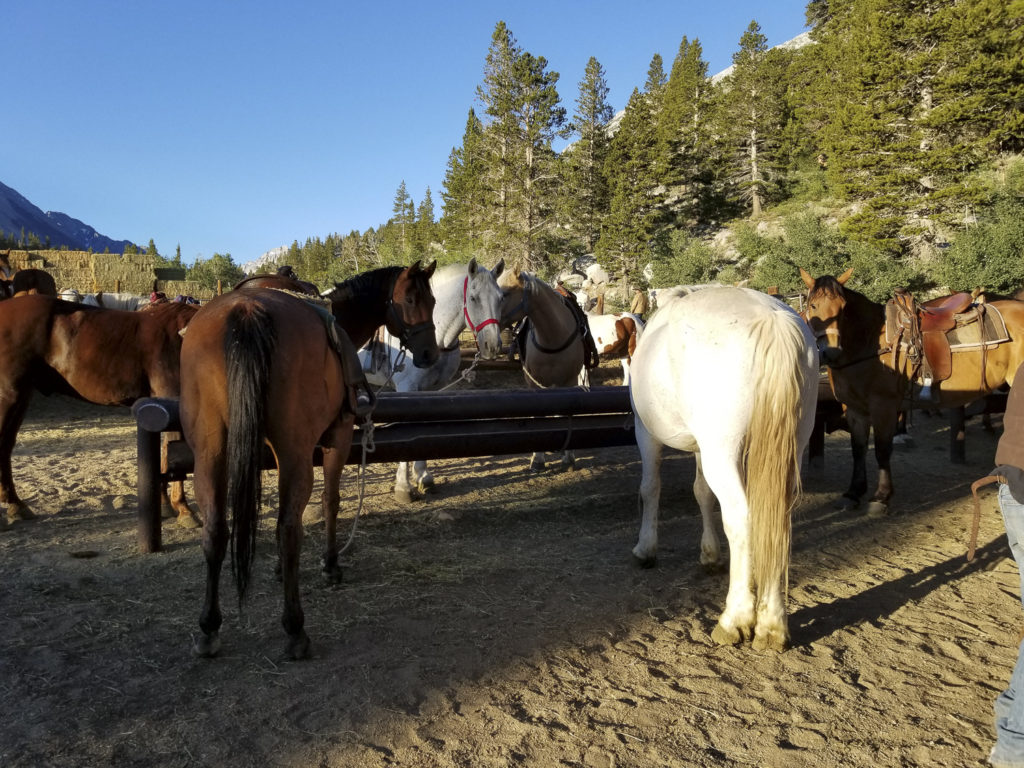
We wait. A couple people missing and it is 7:20; declarations of leaving without them. As Craig London DVM, proprietor, starts the pack station introduction, the last car rolls in. Held up by errant planning, and a variety of comical excuses, a mother and son duo scramble about trying to catch up. The mules are basically loaded according to an interestingly precise dunnage system; Trent, our quiet lead packer and expert guide, begins a reset.
Finally, the introductions are made. Ken, our leader, steps up with Craig and introduces himself along with the general plan. It’s breakfast time and we gather among introductory conversations. Roy and Robin are brothers. Roy has been on several of Ken’s trips, including a previous ride into Pioneer Basin. His brother Robin, from New York City, has joined him this week. I look forward to traveling with these guys.
We sit with Janet (Seattle) and Adrian (Maryland); Dave (San Diego) soon joins us. The meal is hearty mix of fried eggs in toast (egg resting in a clean circle in each slice of bread), sausage, and fruit. A box of sandwiches appears for our traveling lunch. It is unsafe to carry packs on our individual horses so we are given a small “horn pack” where we can stow a water bottle and a few other bits of gear.
Penny, our cook, gives us a safety presentation with one of the horses. It is pretty much what you would expect, serious things to be attentive to, but in the end, have fun, don’t die, and “if you don’t wear a helmet, you’re an idiot”. I have chosen not to, however, confirming the idiom. I would second-guess this decision several times in the coming days. And then we meet our horses…
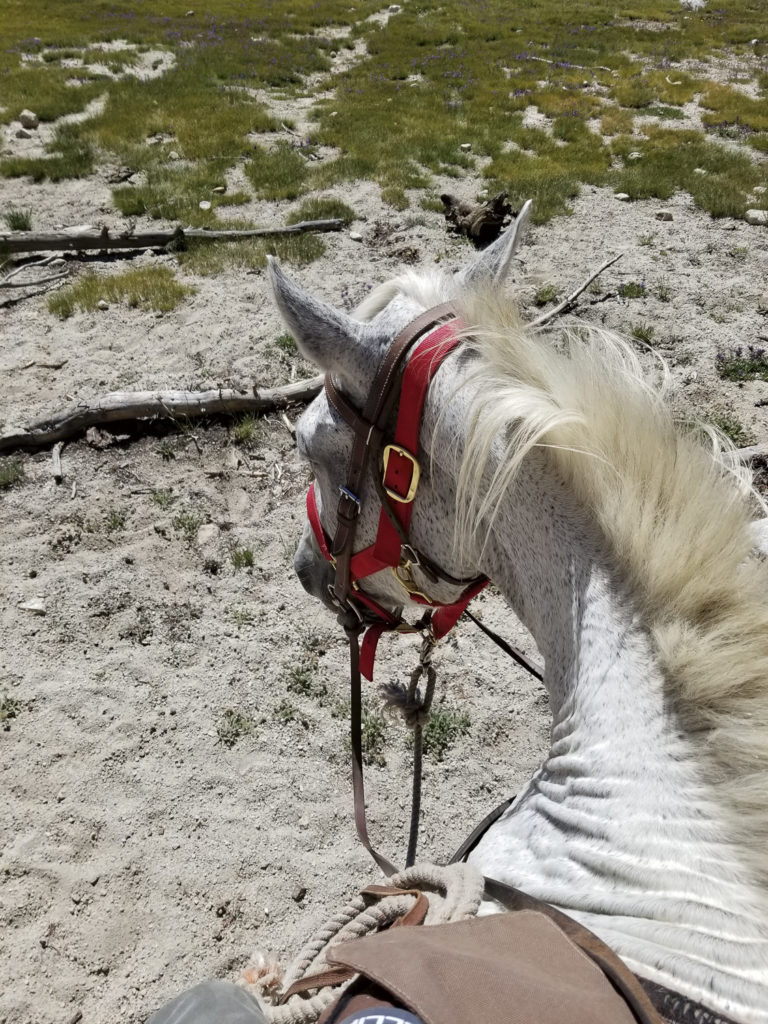
Cisco will be my partner for the next five days. He’s a tall, white and gray, probably some kind draft horse mix, with a bright red halter. I’ll need a rock to get on the giant. Kayla, our second packer, helps with the bridle and reigns and then I load up. Des is on a chestnut Haflinger; they look great and it should be fun for her as we head into the John Muir Wilderness. But first we stand and wait a while. Some skittering about as the late-comers continued to shuffle with their personal odds-and-ends.
Finally, Kayla led out of the corrals and into the forest. The horses took up their habitual positions, trail-wise, end-to-end. They were also ready to go. I missed it, but Trent must have left with the mule-train while we were having breakfast.
We rode a long gradual ascent, with rocky granitic steps. The horses climb impressively and mostly carefully. They wrestle a bit with ones in front or behind. I set in with conversations with Jeff (Pittsburg; who I thought was a second “Ken” for a while) as he rides behind me. We stop once to check straps and have a rest below Ruby Lake. This is much easier than I anticipated. I feel fine as we begin the switchbacks to Mono Pass. The views have become expansive to the south toward Bear Creek Spire and Mount Abbot. It is perfectly clear as we traverse the pass, dropping to wade into the sandy delta of Summit Lake. The views in every direction are inspiring as we begin our drop to Trail Lakes, the spot for lunch.
I refill my water bottle from the creek below Trail Lake. We don’t have a filter readily available, but Penny lets me know that they’ve been using the water at this elevation straight from the streams for many years. If I’m going to stay hydrated, I’ll need to embrace this. The pack station gear list had water filter as optional. We’ll see.
The downhill is tough, on the horses and the riders. It seems an endless series of short switchbacks dropping into the forest near Mono Creek. The horses pause at stream crossings to drink heavily or simply lollygag prior to continuing the descent. It is impressive that there are no mishaps on the way down; the horses are careful generally even as they twist and hope, with marginally sure footing of steel shoes and granitic rock.
The climb out of Mono Creek is relatively short in a pretty woodland before we pop out at grassy lake and see a group of tents on a boulder-strewn ridge to the water’s east. This is our camp. There is a field kitchen and a cluster of lawn chairs. A dug privy occupies a ragged but functional tent cover. I find a sandy patch to set our tent (we brought our own) and then we lounge before dinner.
Ken introduces the plan for the coming days, talks a bit about altitude and acclimatization. Penny is already working on dinner. We get to know each other a bit – Michelle (Portland) and her aunt Judith (Salt Lake City), Judith is an appellate court judge. Sarah, Zach’s mom, is not feeling well, barely managed to stay upright on the descent. Some concern over her wellness, but we are hoping she can rest and improve in the altitude. Zach doesn’t seem too concerned. He’s studying some Mountain Medicine books, prepping his collection of film cameras, and thinking about a hike to lakes further upstream. Sarah would rally over the coming days, and I believe everyone took something special away from their time in the backcountry.
After a pasta dinner we disperse around the lake for our first evening shoot. The mosquitos are going to enjoy us. They seem thick for August, but I was ready for this. Still it is hard to concentrate, and the clear sky is losing my attention. I decide to turn in, Des having been way ahead of me. In my sleeping bag, as I wait for sleep, I am still swaying from the day’s ride.
The Photography
The strategy for the next few days consisted of short morning hikes to various lakes in the Pioneer Basin, usually followed by an afternoon ride to a more distant location along Mono Creek and into the Fourth Recess. Ken let us operate independently, working with individuals or groups as questions or requests come up for discussion. Each afternoon we gathered for a discussion and presentation under the trees adjacent to our camp kitchen. I liked his approach.
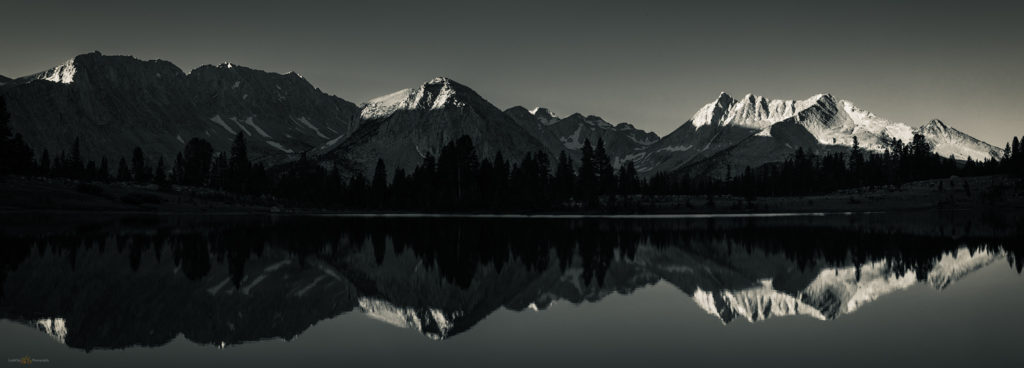
The problem on this trip was the weather. It was perfect, for riding, hiking, and relaxed camping, but not for photography. The skies were clear and remained so, with very minor exception, the entire time. This is never what one hopes for, especially when enthralled and inspired by the vistas with each day’s hike above treeline. I love photographing mountains, but I struggled each day. I did not have my mind wrapped around black-and-white composition nor did I find satisfaction (on this trip) searching out intimate scenes in the forest or among the rocks.
However, it was amazingly beautiful, and we had great company. My Lightroom catalog says I took over 500 pictures; I captured a handful that I like. In fact, my favorites may be the moonlit images captured when most folks had turned in for the evening. Working with the contrast of moonrise on the jagged ridgelines was something I visualized prior to entering the backcountry. I like my one strong black-and-white panorama of Mono Rock and the Recesses.
Pioneer Lake #2 Mornings
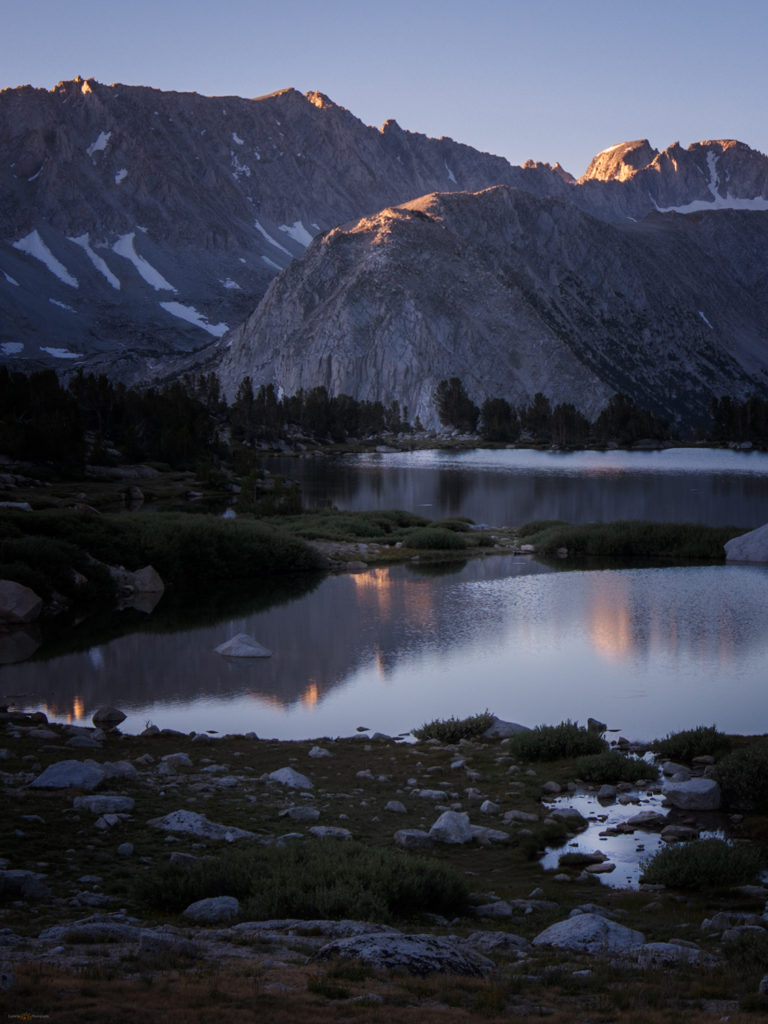

Night Photography at Camp
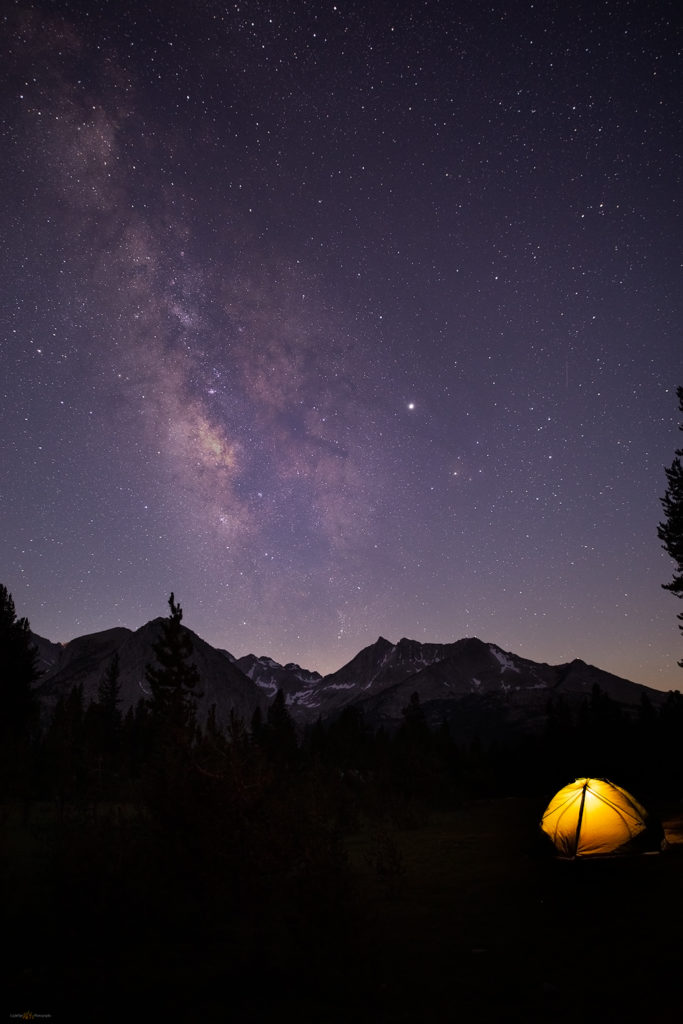
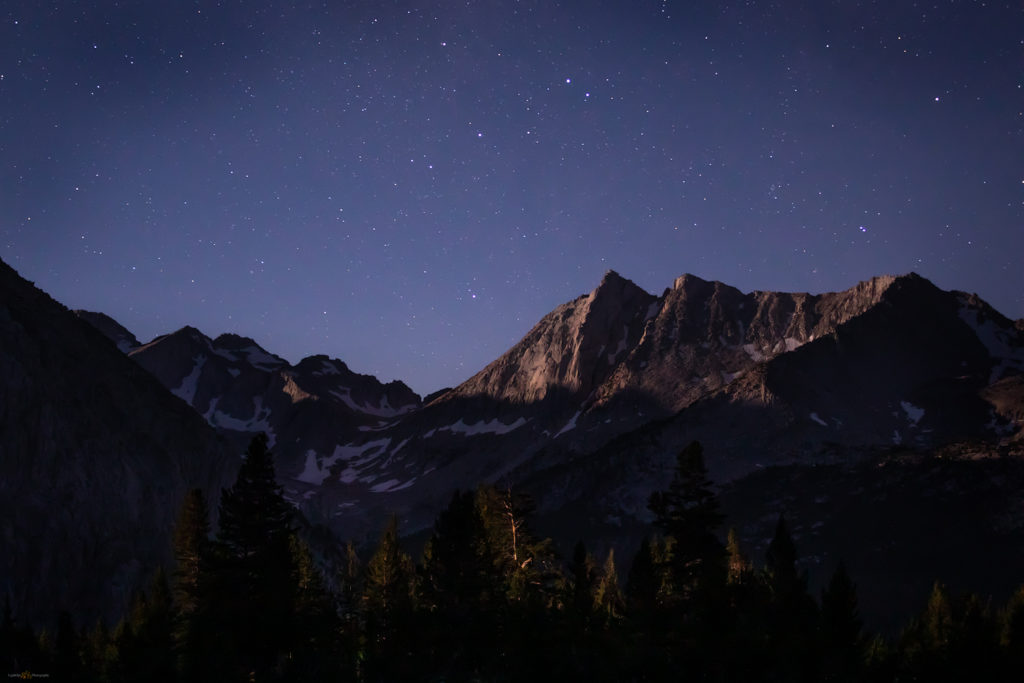
Afternoon Recesses
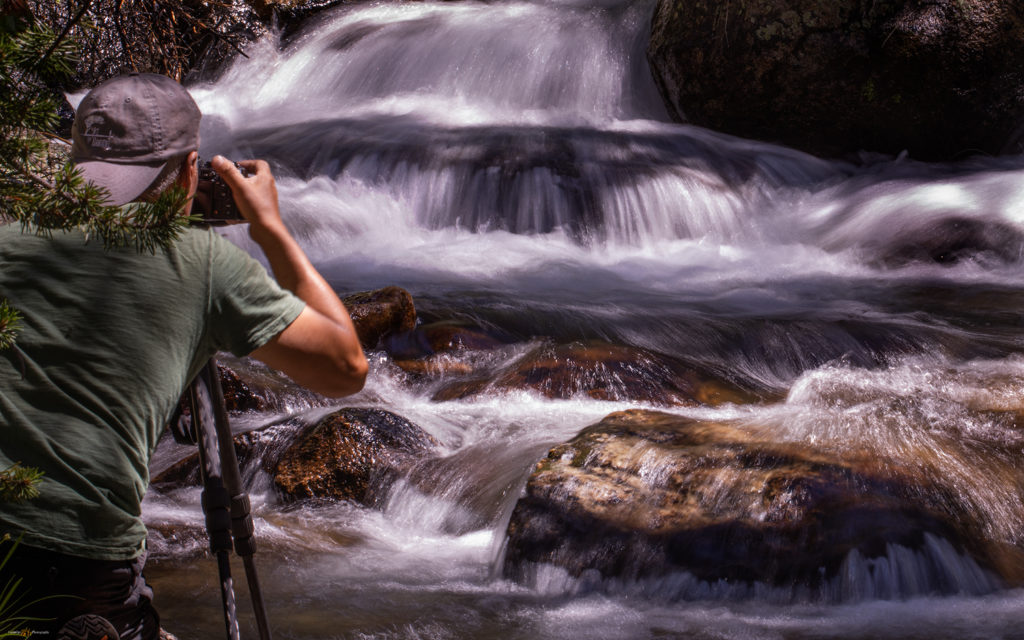
Special thanks to Ken Lee. A mindful photographer and excellent, patient instructor, Ken is one of those people I would look forward to travelling with, or running into, anywhere. I appreciate his outlook on landscape and travel, and he deserves continued success. After my excellent Iceland experience, I had thought I might not join another workshop, preferring to travel on my own or in smaller groups, but I am so glad Des brought us together for a few days. The endless blue skies were not his fault.
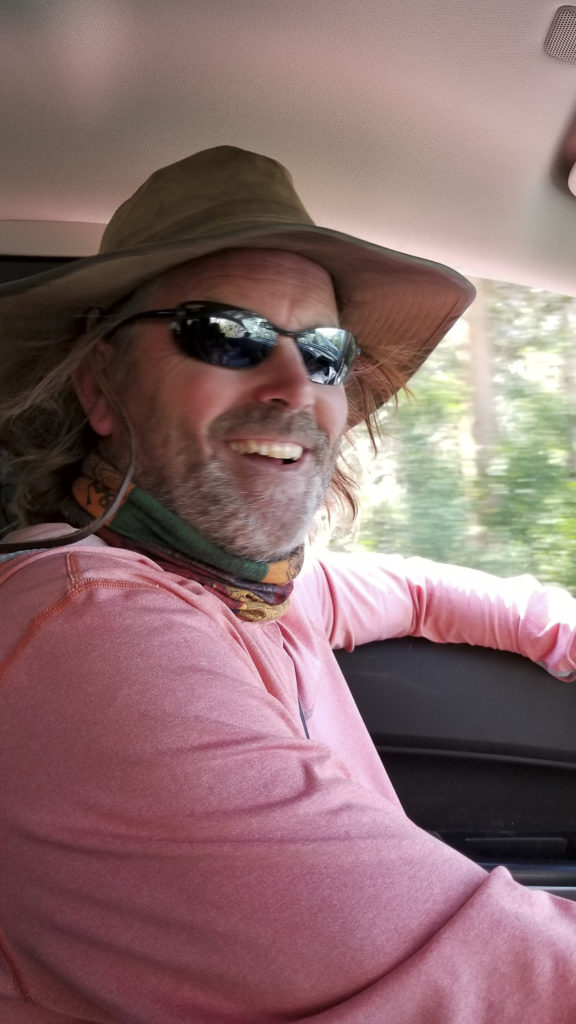
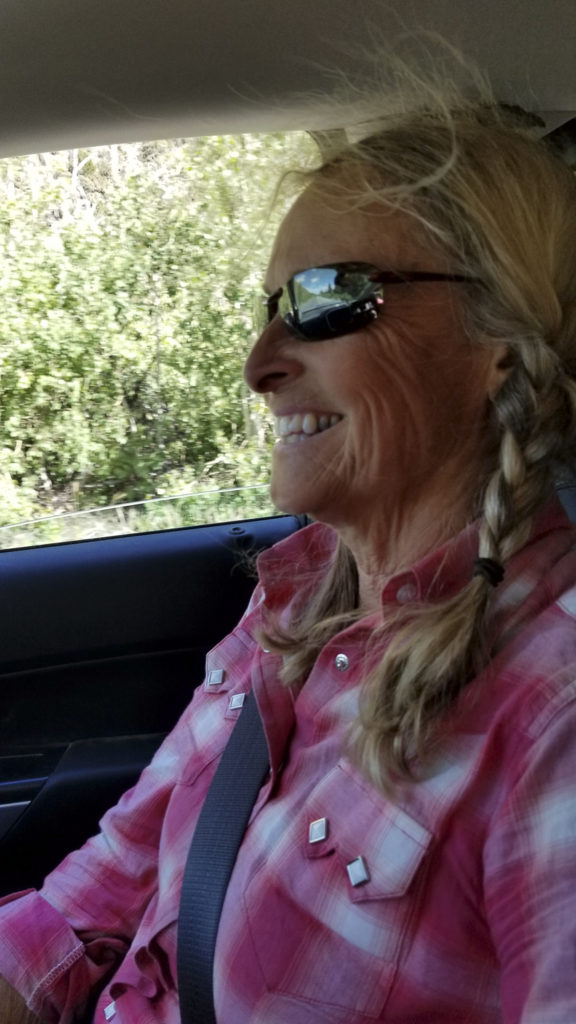
Des played with photography on a few outings and she enjoyed Ken’s instruction on capturing images with mobile devices. She took our favorite and iconic heart image on the night before the workshop. Done. Drop camera. Ride horses. We enjoyed the sunny days as we have enjoyed the 30 years. They ain’t all perfect, but it was fun getting there.
Keep going.
Please respect the natural and cultural resources of our public lands.
